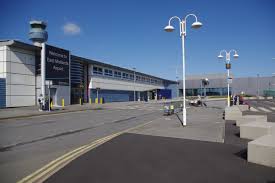Understanding East Midlands Airport: Key Facts and Developments

Introduction to East Midlands Airport
East Midlands Airport (EMA), located in Leicestershire, serves as a critical hub for both passenger flights and cargo operations. Its strategic position within the United Kingdom makes it a vital gateway for travel to and from the East Midlands region, connecting a diverse range of destinations and playing an essential role in the local economy. With increasing passenger numbers and expansion plans, EMA’s importance continues to grow.
Recent Developments and Events
In 2023, East Midlands Airport reported a significant increase in passenger traffic, recovering towards pre-pandemic levels. The airport handled 4.5 million passengers in 2022, reflecting a robust resilience in air travel demand. Notably, the airport’s major airlines include Ryanair, Jet2, and TUI Airways, enhancing its position as a preferred travel hub for holidaymakers and business travellers alike.
Furthermore, the airport’s expansion efforts are underway, with plans announced for the development of new facilities aimed at improving passenger experience and operational efficiency. The proposed enhancements include updated terminal services and additional parking spaces to accommodate the increased flow of visitors. Additionally, EMA is set to expand its cargo operations, further solidifying its role as a key player in the UK’s logistics and supply chain sector. In 2023, it ranked as the second-largest cargo airport in the UK, further testament to its growing significance in freight transport.
Impact on the Local Economy
East Midlands Airport contributes substantially to the local economy, supporting thousands of jobs both directly and indirectly. According to a recent report, the airport is believed to generate around £1 billion annually for the regional economy. Its connectivity fosters local businesses by facilitating smoother importation and exportation processes, especially for time-sensitive goods.
The surrounding area is also witnessing increased investment as businesses and services expand to cater to the growing number of passengers and air traffic. New hotels, restaurants, and business parks are being developed to service the airport’s needs, indicating a thriving economic landscape.
Conclusion and Future Outlook
East Midlands Airport stands as a critical infrastructure asset for the region, and its ongoing developments signal a positive trajectory in both air travel and economic growth. As airlines continue to expand their routes, and the airport enhances its services, local residents and businesses are well-positioned to see further benefits. Looking ahead, EMA is expected to strengthen its role as a pivotal transportation and logistics hub, buoyed by increased investment and a commitment to meet the evolving needs of travellers and cargo operations alike.







